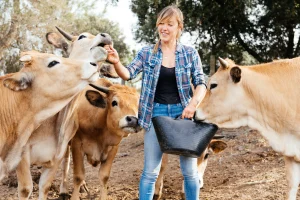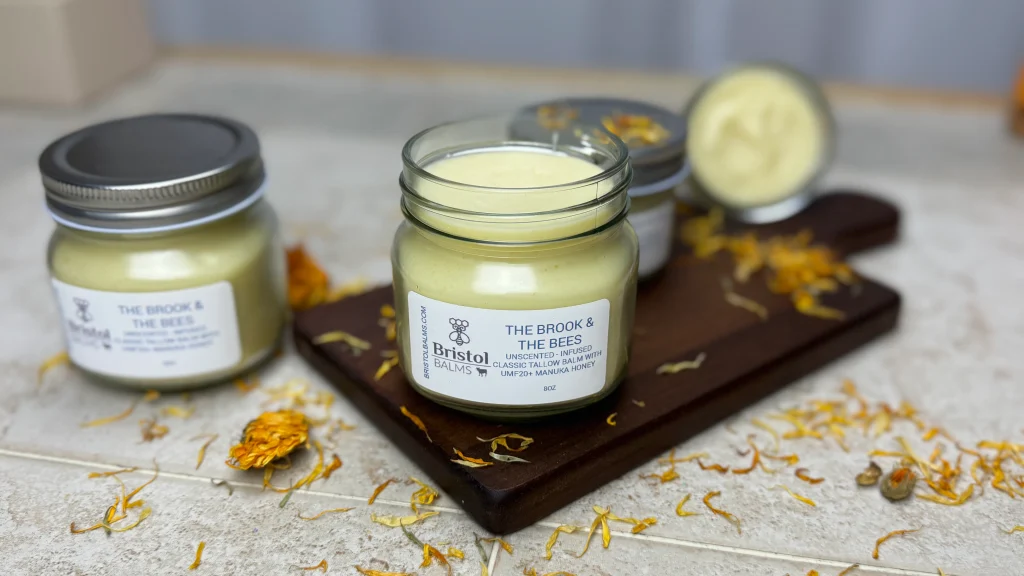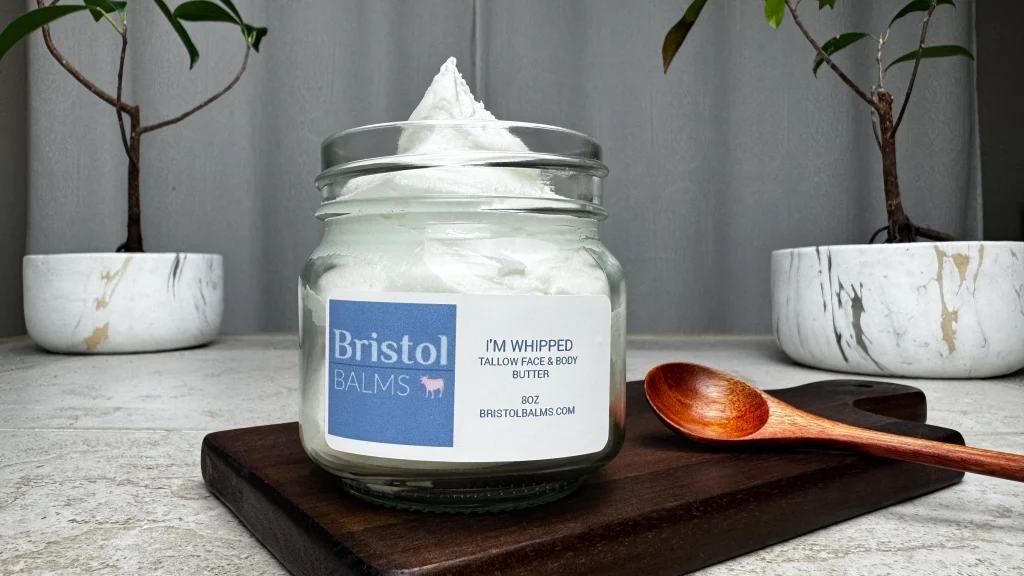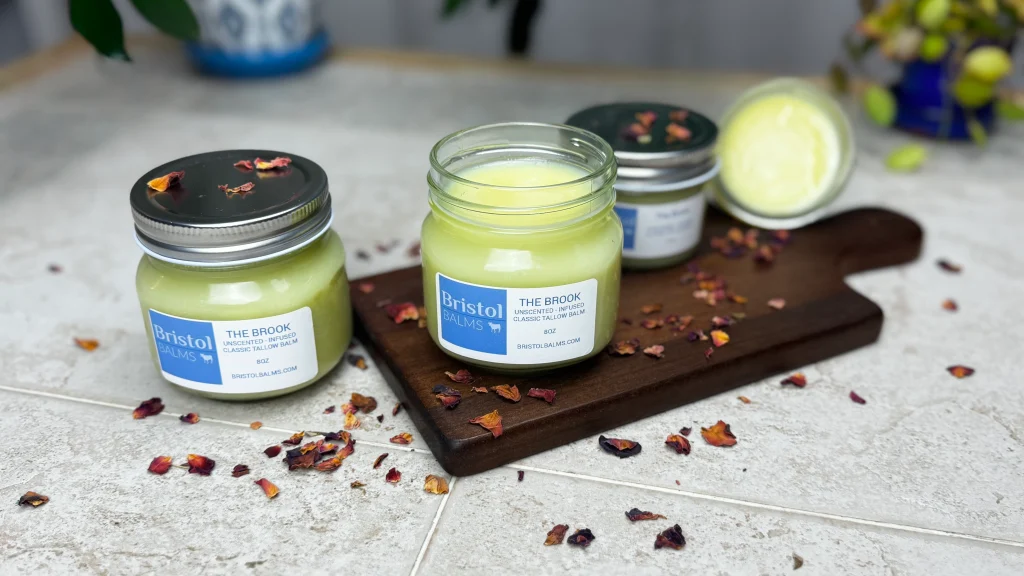Tallow: A Natural Fit for Sustainable Skincare
The environmental impact of skincare products has become a key concern for eco-conscious consumers. With its roots in traditional practices and its alignment with modern sustainability goals, tallow is a standout ingredient. From supporting zero-waste skincare practices to promoting regenerative agriculture, tallow offers a unique opportunity to make your beauty routine both greener and cleaner.
In this post, we’ll explore the environmental benefits of tallow, including its role as an upcycled byproduct, its alignment with grass-fed farming practices, and its biodegradable nature.
1. Tallow as a Zero-Waste Ingredient
Tallow is derived from suet, the nutrient-rich fat found around the kidneys of cows or sheep. Without its use in skincare, this fat would often be discarded. Instead, upcycling byproducts like tallow transforms potential waste into something valuable, aligning perfectly with the principles of zero-waste skincare.
Key Benefits:
- Reduces Waste: By converting suet into tallow balm, manufacturers minimize unnecessary waste.
- Circular Economy: This practice supports a more sustainable, resource-efficient approach to beauty production.
According to Zero Waste Chef, upcycling byproducts is a crucial step in reducing waste in industries like food and skincare.
2. The Role of Grass-Fed Farming in Sustainability
Regenerative Agriculture Practices
Tallow sourced from grass-fed animals supports regenerative agriculture, a farming method that restores soil health and promotes biodiversity. This process:
- Improves soil quality by reducing erosion and encouraging plant diversity.
- Sequesters carbon in the soil, helping to offset greenhouse gas emissions.
Ethical Farming Practices
Grass-fed farming prioritizes humane treatment of animals, avoiding the overuse of antibiotics and hormones common in industrial systems. By choosing grass-fed farming practices, tallow balm brands like Bristol Balms contribute to a more ethical and sustainable supply chain.
For more on how regenerative farming works, visit Regeneration International.
3. Tallow’s Biodegradability
Unlike synthetic ingredients commonly found in skincare, eco-friendly tallow balm is fully biodegradable. This ensures that it doesn’t contribute to pollution when washed off or discarded.
How Tallow Helps the Planet:
- Safe for Soil and Water: Tallow breaks down naturally without leaving harmful residues in ecosystems.
- Microplastic-Free: Unlike products with synthetic components, tallow balm won’t contribute to microplastic pollution.
4. Local Sourcing Reduces Carbon Footprint
Tallow balm is often made with locally sourced ingredients, especially when using grass-fed farming systems. This minimizes the environmental cost of transportation and supports regional economies.
Why Local Matters:
- Fewer Emissions: Reducing the distance from farm to product lowers the carbon footprint of production.
- Community Support: Local sourcing keeps money in regional agricultural systems, promoting sustainable farming.
5. Comparing Tallow to Conventional Ingredients
| Feature | Tallow (Grass-Fed) | Conventional Skincare Ingredients |
|---|---|---|
| Sustainability | Zero-waste byproduct, supports regenerative farming | Often petroleum-based or synthetic, resource-intensive |
| Environmental Impact | Low carbon footprint when sourced locally | High due to synthetic production and transportation |
| Biodegradability | Fully biodegradable | Often non-biodegradable, contributing to pollution |
FAQs: The Environmental Benefits of Tallow
1. How is tallow considered sustainable?
Tallow is an upcycled byproduct of the meat industry, reducing waste and supporting zero-waste skincare practices.
2. Is tallow biodegradable?
Yes. Tallow is fully biodegradable, making it a safer choice for the environment compared to synthetic ingredients.
3. Does grass-fed tallow have a lower environmental impact?
Absolutely. Grass-fed farming practices support regenerative agriculture, sequester carbon in the soil, and reduce resource-intensive feedlot systems.
4. Can tallow balm reduce plastic waste?
Yes. Many tallow balms are packaged in eco-friendly containers, further supporting sustainable skincare.
The Greener Choice: Tallow Balm
Tallow balm is more than just an effective moisturizer—it’s an eco-friendly tallow balm solution that supports the environment at every step. From its role in zero-waste skincare practices to its alignment with grass-fed farming, tallow balm offers a sustainable choice for conscious consumers.
Ready to make a greener choice? Explore our grass-fed tallow balms and experience the environmental benefits firsthand.
Learn more about how tallow balm supports sustainability in our guide: What is Tallow Balm.







